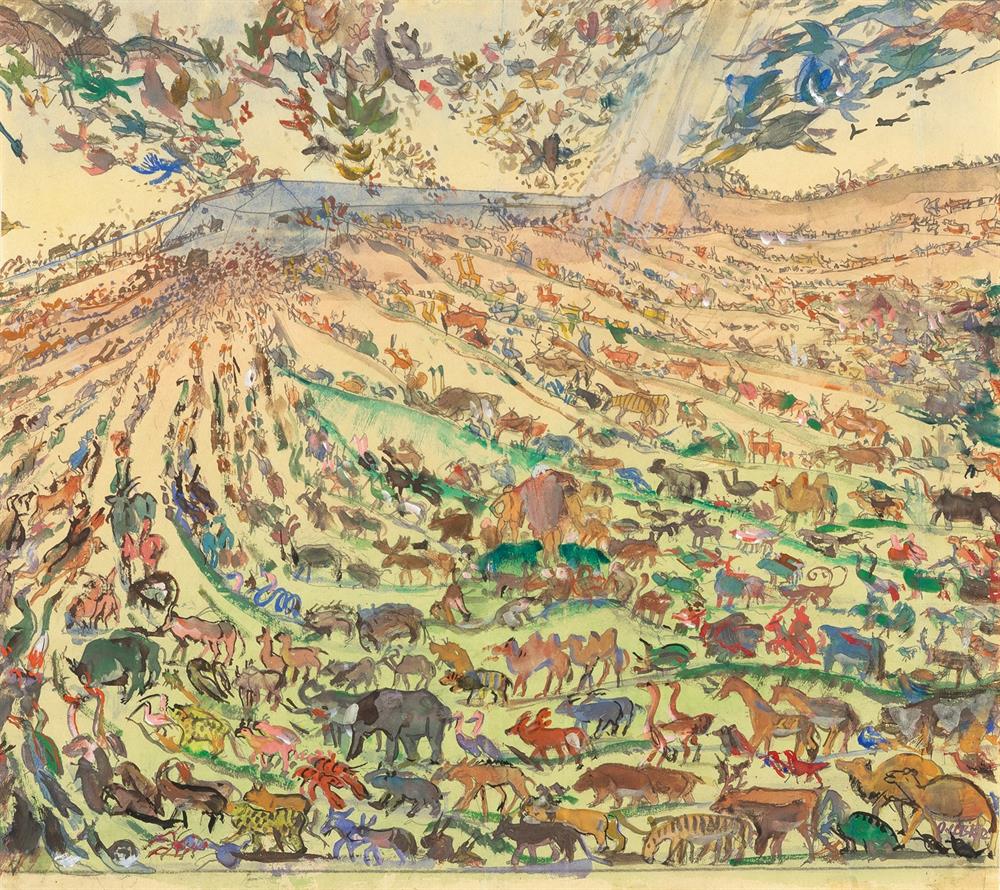
Czernowitz 1874 - 1951 Wien
Noah´s Arch
design for the etchingMixed media on paper
38.3 x 43.2 cm
Signed lower right: O. Laske
Provenienz:
Giese & Schweiger Gallery, Vienna
Literatur:
cf. Cornelia Reiter, Oskar Laske (1874-1951) Ein vielseitiger Individualist, Veröffentlichung der Albertina Nr. 39, Salzburg 1995, ill. p. 28, no. 21
Oskar Laske was born in Chernivtsi, Ukraine in 1874. He worked as a painter, graphic artist, stage set designer, illustrator and architect. From 1892 to 1898 he studied architecture at Vienna’s Technical University and from 1899 to 1904 at Vienna’s Academy of Fine Arts under Otto Wagner. He received private painting lessons from the Viennese landscape artist Anton Hlaváček. The versatile artist undertook extended study trips throughout all of Europe, the Middle East and North Africa. He rapidly developed his own, inimitable painting style, which is marked by a great talent for storytelling, with a tendency towards the humorous and whimsical. Oskar Laske was a member of the Hagenbund, the Vienna Secession and the Vienna Künstlerhaus. His original works are accorded significant status in Austrian art of the 20th century. Oskar Laske died in Vienna in 1951.
The pictorial subject of Noah’s Ark was executed by the artist in oil, watercolours and as an etching. In 1919 Laske designed the theme as a monumental wall frieze for the war orphans’ home in Kalksburg. In 1925 he created a leporello-style folding album. In 1935 Oskar Laske finally created a further variation on ‘Noah’s Ark’ in oil.
Laske’s successful symbiosis of comprehensive humanistic education and a downright exuberant pleasure in spinning fantasy resulted not only, in our specific example, in several versions of one and the same picture motif separated by differing time intervals. Laske referred thematically to an episode in the Old Testament, Genesis, the contents of which he placed on the lower edge of his etching in a relatively free interpretation: ‘Then all of them went into the crate to Noah, male and female in pairs, from the clean cattle to the unclean.’ Long rows projected on to the surface of animals arranged in pairs aim towards the life-saving ark. Many charming, humorous and highly imaginative details describe mainly the animals in the foreground, while the silhouettes of the animals in the background are often only hinted at dimly and dissolved in spots of paint.
